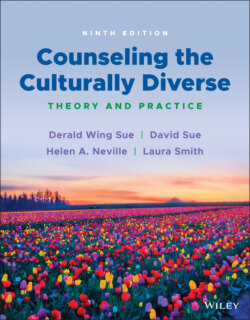Читать книгу Counseling the Culturally Diverse - Laura Smith L. - Страница 64
IMPLICATIONS FOR CLINICAL PRACTICE
Оглавление1 Know that the definition of multiculturalism is inclusive and encompasses race, culture, gender, religious affiliation, sexual orientation, age, disability, and so on.
2 When working with diverse populations, attempt to identify culture‐specific and culture‐universal domains of helping.
3 Be aware that Persons of Color, LGBTQ people, women, and other groups may perceive mental illness/health and the healing process differently than do EuroAmerican men.
4 Do not disregard differences and impose the conventional helping role and process on culturally diverse groups, as such actions may constitute cultural oppression.
5 Be aware that EuroAmerican healing standards originate from a cultural context and may be culture‐bound. As long as counselors and therapists continue to view EuroAmerican standards as normative, they may judge others as abnormal.
6 Realize that the concept of cultural competence is more inclusive and superordinate than is the traditional definition of clinical competence. Do not fall into the trap of thinking “good counseling is good counseling.”
7 If you are planning to work with the diversity of clients in our world, you must play roles other than that of the conventional counselor.
8 Use modalities that are consistent with the lifestyles and cultural systems of your clients, as well as with your training.
9 Understand that one's multicultural orientation (cultural humility, cultural comfort, and cultural opportunity) is very important to successful multicultural counseling.
Microtraining Series Video: Cultural Competence in the Helping Professions
